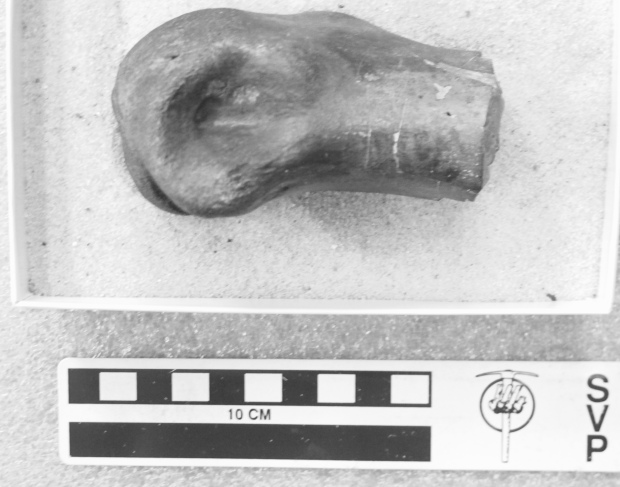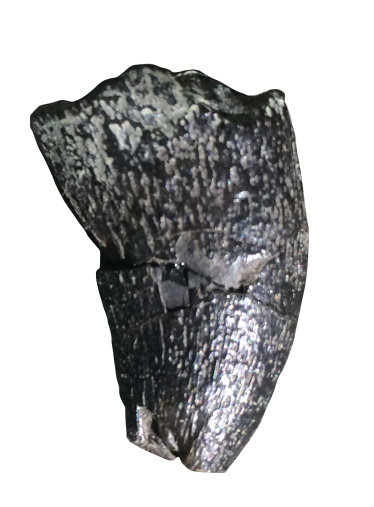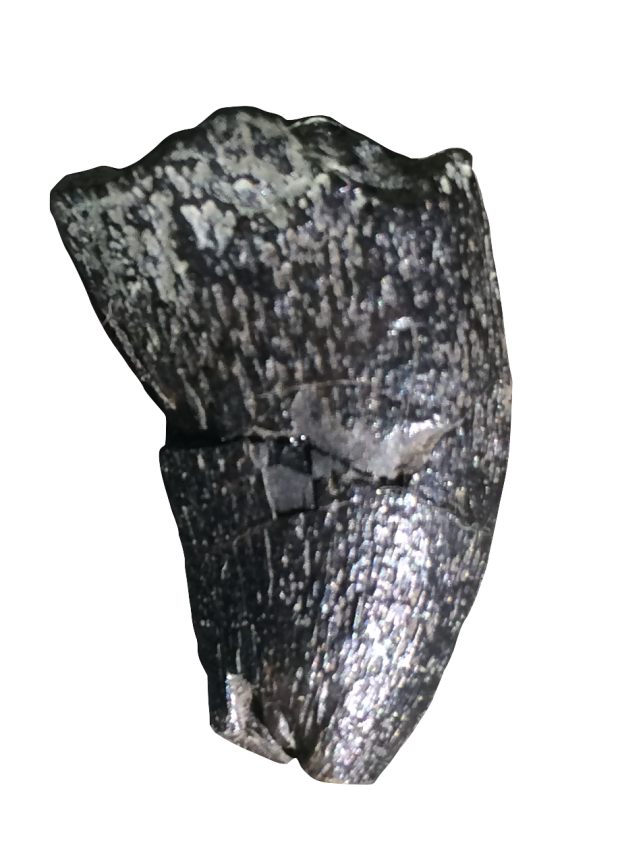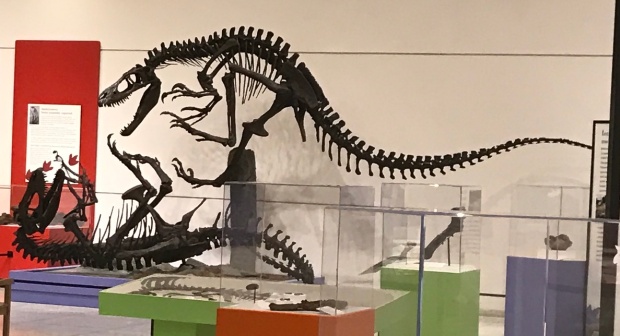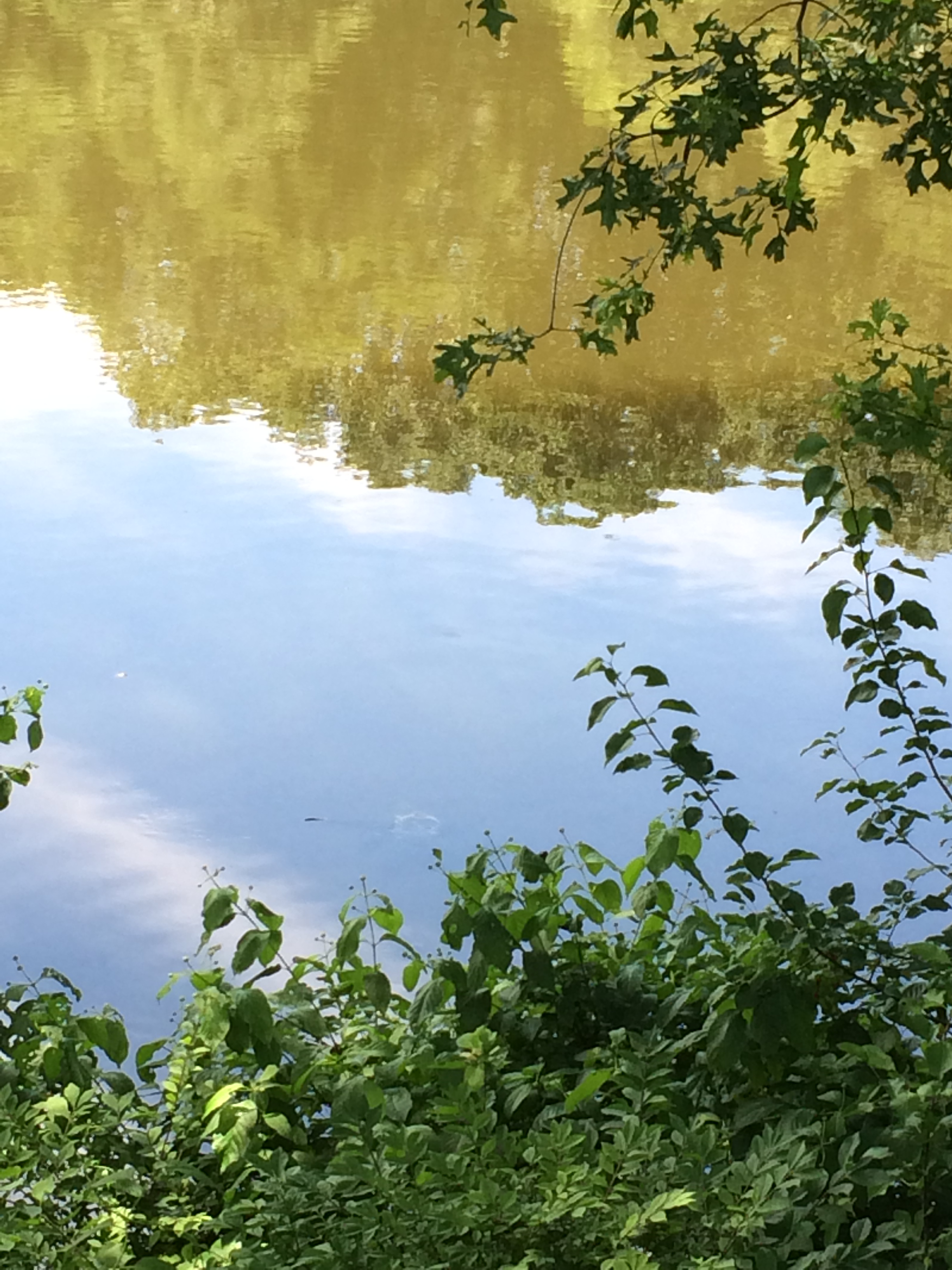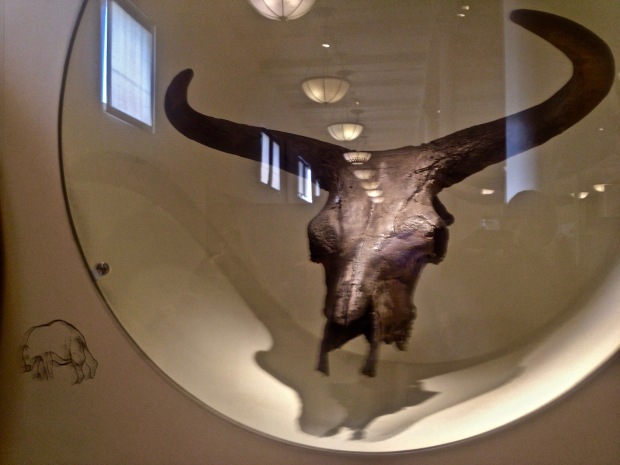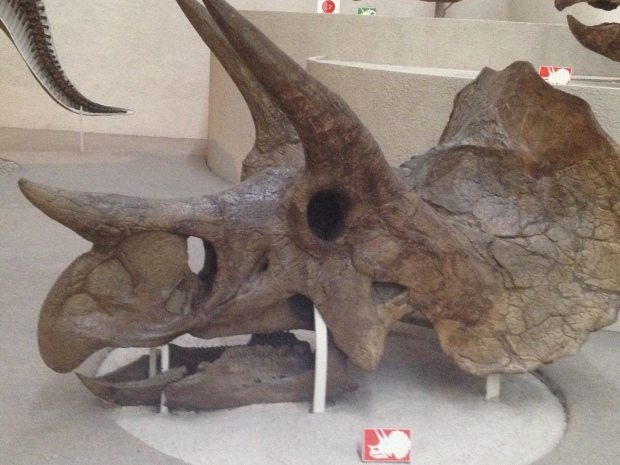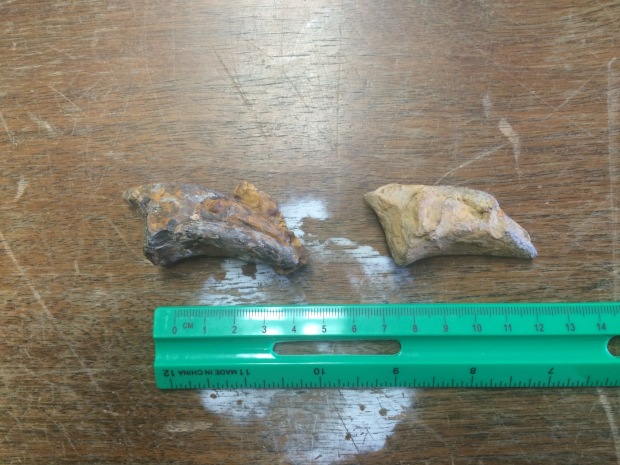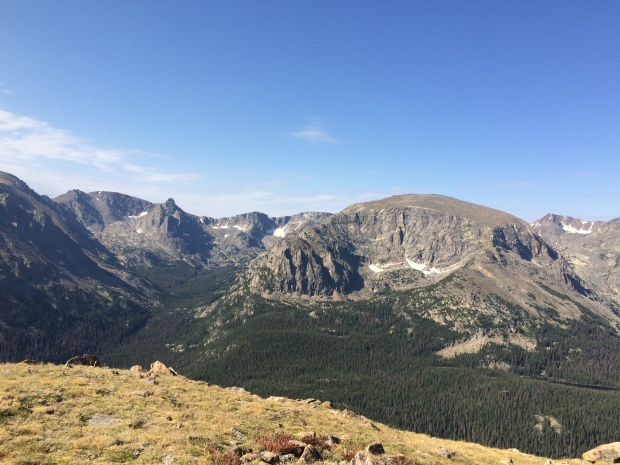Morning, and the orange and beige of a celestial titan rising through slivers of cloud coat the swampy landscape with a buzzing, ochre light. Gently sloping mountains in the far distance, each decorated in a single shade of green trees, are the first to grasp at the brightest rays of light from the sun. Giant azhdarchid pterosaurs, drowsy and chilled by the morning air, launch off of their craggy towers in the highlands to search for food in the swamps and marshes. Within a few minutes, they reach the sky above the lowlands and sink down towards waterways beckoning with a biological buffet. The loud morning calls of ancient insects, amphibians, reptiles, and birds illuminate a scene exclusive to the Campanian. The azhdarchids land by the side of a waterhole, already taking notice of some of their company in these marshes. Nearby, a small, rough-skinned leptoceratopsid rips off leaves from some low foliage as it grunts at a small lizard picking up droppings from the dinosaur’s morning feast. This sturdy dinosaur is related to the massive ceratopsids of the west, though here it lies in the shadows of other dinosaur species. The grey and aquamarine leptoceratopsid, taking notice of the azhdarchids, sniffs and scurries into the underbrush.
Nearby, a flock of ornithomimosaurs stops to drink in the early morning sun. Brilliantly adorned in gleaming black, blue, and grey feathers, the ostrich-mimic dinosaurs huddle close together as they hydrate for the day ahead. Two males, both decked out in feathers designed to impress the females of the crowd, start to kick and peck at each other while displaying the brilliant patterns that spur from their forelimbs. Both males are soon driven off when a mixed heard of Lophorhothon and Hadrosaurus arrive by the side of the waterhole. At 8-9 meters in length, these are all medium-sized hadrosaurs, the Lophorhothon representing a more ancient lineage of duckbills than their Hadrosaurus companions. As the large herbivores lower their heads to drink, Saurornitholestes dromaeosaurs scamper out from their feet. These small predators would do well to mind the size and temper of the hadrosaurs.
On the opposite side of the waterhole, a herd of true giants triumphantly marches out from the surrounding swamps and bayous. These are Hypsibema crassicauda, 15 meters long and 15 tons in weight, the largest animals of these lands. The herd of hadrosaurs, thirteen strong, lumbers toward the edge of the waterhole to drink. The massive skulls of the titans slowly gulp up the water as smaller dinosaurs and crocodylomorphs flee the scene. A large female Dryptosaurus, 9 meters from head to tail, is also deterred from a quick stop for water by the Hypsibema herd. Several fresh water turtles push themselves back into the murky water.
Back on the other side of the waterhole, a disturbance spooks the hadrosaurs. Suddenly, an ornithomimosaur is pulled underneath the water. Just off of shore, the head a giant Deinosuchus crocodyliform emerges as the massive predator tries to gulp down the dead ornithomimosaur whole. The azhdarchids take off. They’ve had enough of the lowlands.
For the majority of the 19th and 20th centuries, the Cretaceous animals of the Carolinas have remained obscure, with decades lacking in finds punctuated by tantalizing glimpses of Cretaceous Carolinian ecosystems by means of fragmentary specimens. Ebenezer Emmons, namer of the Adirondack mountains, described isolated teeth that would later be identified as those of the massive crocodylian Deinosuchus rugosus (e.g., Emmons, 1858; Schwimmer, 2002), an noted paleontologist Edward Drinker Cope designated hadrosaur remains from a marl pit in North Carolina as the type of Hypsibema crassicauda 11 years later (Cope, 1869).
However, the past forty years have seen revelations in our understanding of the Cretaceous species of these states, including the publication of several Cretaceous-age faunas from sites within them. New discoveries of terrestrial and aquatic vertebrates from the Carolinas have illuminated several biogeographic trends from the Cretaceous of North America, supporting the notion that Appalachia was a refugium for certain vertebrate groups like as non-tyrannosaurid tyrannosauroid and basal hadrosauroid dinosaurs.
In North Carolina, perhaps the most important (in terms of terrestrial fossils) site is Phoebus Landing, a tidal-estuarine deposit located near Elizabethtown (e.g., Miller, 1967; Baird and Horner, 1979; Weishampel and Young, 1996). This site, bearing sediments of the middle-late Campanian Tar Heel Formation (e.g., Baird and Horner, 1979; Weishampel and Young, 1996; Weishampel et al., 2004; Self-Trail et al., 2004; Schwimmer et al., 2015), has not only produced skeletal elements from at least four different dinosaur species, but has also preserved teeth and bones from the massive crocodylian Deinosuchus. Among the dinosaur remains discovered here are the morphologically odd (NB: distinct from adult H. foulkii) massively constructed vertebrae of the giant (12+ meter long) hadrosauroid Hypsibema crassicauda (e.g., Baird and Horner, 1979; Weishampel and Young, 1996). Additional evidence of supermassive hadrosauroids in the Tar Heel Formation ecosystem comes in the form of a massive partial humerus only outsized by that of Magnapaulia from Phoebus Landing (Baird and Horner, 1979). Unfortunately, the fragmentary nature of these specimens means that, for now, only tantalizing glimpses of the Cretaceous giants that must have once roamed the Carolinas have been afforded by the marls. Specimens comparable to the corresponding elements in Hadrosaurus foulkii have also been recovered from the sediments at Phoebus Landing (e.g., Baird and Horner, 1979; Weishampel and Young, 1996), and Miller (1967) suggested the presence of “Hadrosaurus minor” (a dubious species of New Jersey hadrosaur possibly representative of juveniles of indeterminate genera) in the fauna present at the site. Finally, specimens comparable to the hadrosauroid Lophorhothon atopus have been recovered (e.g., Baird and Horner, 1979; Weishampel and Young, 1996). From all of this, it seems safe to conclude that two to three species of hadrosaurid were present in the Tar Heel fauna at Phoebus Landing. Importantly, a partial jawbone from a site nearby Phoebus Landing was recently described as Appalachia’s first neoceratopsian (Longrich, 2016).

Fossils from Phoebus Landing were probably deposited in a tidal or estuarine setting. Photo by the author, 2017.
Theropods also left an important record at Phoebus Landing. Teeth and hindlimb elements possibly referable to Dryptosaurus aquilunguis have been recovered and described from the site, as have ornithomimosaur bones and dromaeosaurid teeth (e.g., Miller, 1967; Baird and Horner, 1979; Weishampel and Young, 1996; Kiernan and Schwimmer, 2004). Along with the data from ornithischian remains, the Tar Heel supported at least seven different dinosaur genera.
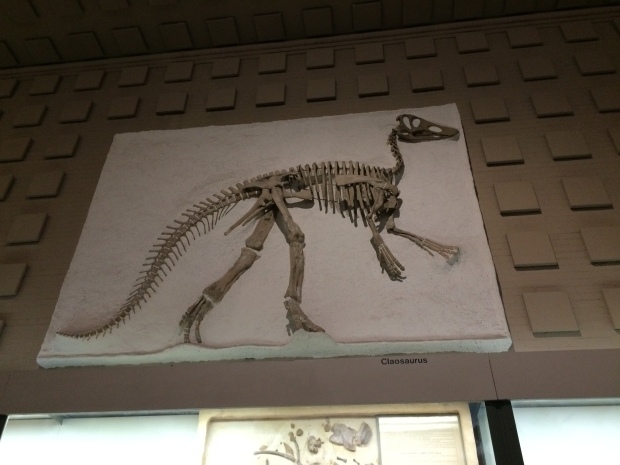
Lophorhothon and other hadrosauroids from the Tar Heel Formation were probably similar in form to Claosaurus (above). Photo by the author, 2017.
Of overlapping time and geographically adjacent to the Tar Heel Formation is Coachman Formation, which in South Carolina has recently been found to contain several species of dinosaur. Schwimmer et al. (2015), in their extensive review of several sites with Coachman Formation outcrops, described remains assignable to the tyrannosauroid Appalachiosaurus montgomeriensis, the dromaeosaurid Saurornitholestes langstoni, at least one additional dromaeosaurid represented by teeth, indeterminate ornithomimosaurs, indeterminate maniraptorans, specimens comparable to “hadrosaurines”, and indeterminate hadrosauroid and ornithischian material. In addition, many species of turtles, fish, and crocodylians (including Deinosuchus) were described by Schwimmer et al. (2015) from Coachman Formation sediments, further bettering our understanding of that ecosystem.
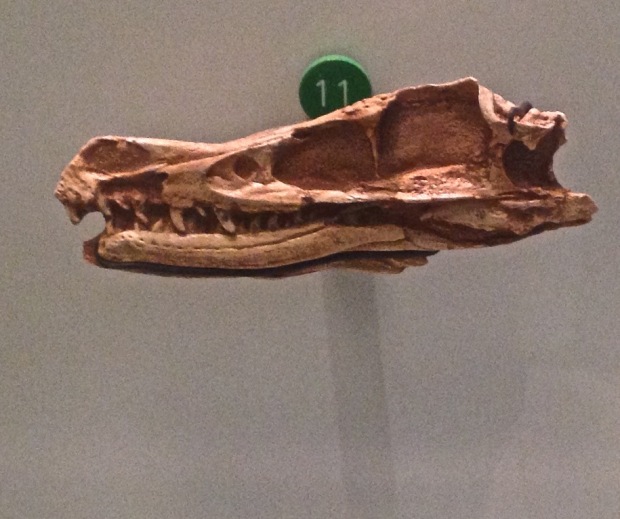
The dromaeosaurid Saurornitholestes would have been similar to Velociraptor (skull imaged above). Photo by the author, 2015.
The Tar Heel and Coachman Formations represent important glimpses of Cretaceous life in the Carolinas that are becoming clearer with new research into their faunas. The formations’ geographic location, sandwiched between the historically notable fossiliferous formations of New Jersey and Delaware and the more recently recognized ones of the states of Alabama, Mississippi, Tennessee, Missouri, and Georgia, mean the faunas of the Tar Heel and Coachman are essential to our understanding of the biogeography of vertebrates on Appalachia. What remains to be discovered in these deposits will certainly reveal more and more about the life forms of the obscure landmass that sat east of the Western Interior Seaway over 68 million years ago.
For more on some of the dinosaurs of the Tar Heel and Coachman Formations, see these previous posts:
Antediluvian Beasts of the East: Hypsibema crassicauda
Antediluvian Beasts of the East: Dryptosaurus aquilunguis
PaleoNews #18
References.
Schwimmer DR. 2002. King of the Crocodylians: the Paleobiology of Deinosuchus. Bloomington: Indiana University Press.
Cope ED. 1869. Remarks on Eschrichtius polyporus, Hypsibema crassicauda, Hadrosaurus tripos, and Polydectes biturgidus. Proceedings of the Academy of Natural Sciences of Philadelphia 21:191-192.
Miller HW. 1967. Cretaceous Vertebrates from Phoebus Landing, North Carolina. Proceedings of the Academy of Natural Sciences of Philadelphia 119:219-239.
Baird D and Horner JR. 1979. Cretaceous dinosaurs of North Carolina. Brimleyana 2:1-28.
Weishampel DB and Young L. 1996. Dinosaurs of the East Coast. Baltimore: Johns Hopkins University Press.
Weishampel DB, Barrett PM, Coria RA, Loeuff JL, Xing X, Xijin Z, Sahni A, Gomani EMP, and Noto CR. 2004. Dinosaur Distribution. In: Weishampel DB, Dodson P, and Osmólska H, eds: The Dinosauria, 2nd Edition. Berkeley: University of California Press. p. 517-617.
Self-Trail JM, Christopher RA, Prowell D, and Weems RE. 2004. The Age of Dinosaur-Bearing Strata at Phoebus Landing, Cape Fear River, North Carolina. Geological Society of America Abstracts with Programs 36(2):117.
Schwimmer DR, Sanders AE, Erickson BR, and Weems RE. 2015. A Late Cretaceous Dinosaur and Reptile Assemblage from South Carolina, USA. Transactions of the American Philosophical Society 105(2):1-157.
Longrich NR. 2016. A ceratopsian dinosaur from the Late Cretaceous of eastern North America, and implications for dinosaur biogeography. Cretaceous Research 57:199-207.
Kiernan K and Schwimmer DR. 2004. First record of a Velociraptorine theropod (Tetanurae, Dromaeosauridae) from the eastern Gulf Coastal United States. The Mosasaur 7:89-93.
